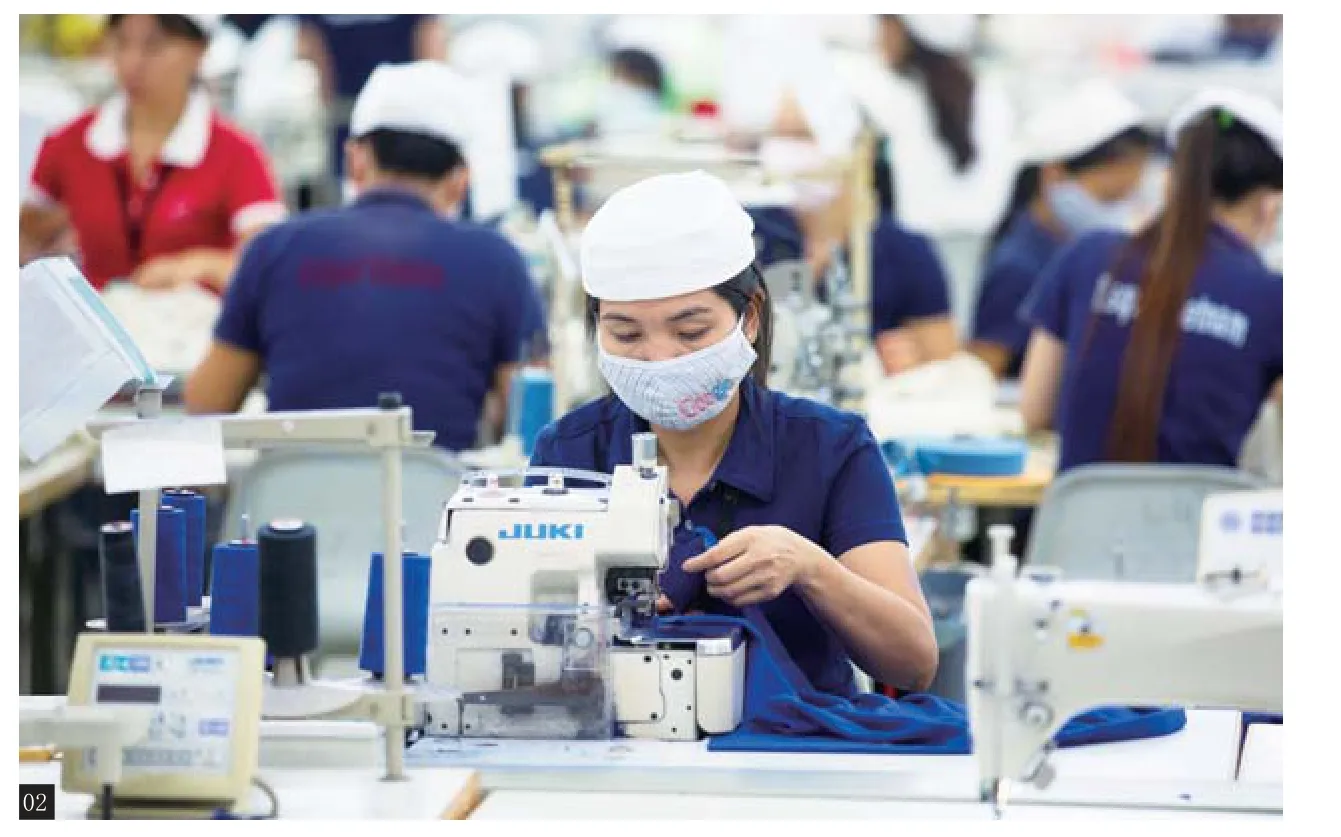Pingxiang (Guangxi) Boosting Labor-Forces Cooperation Along the China-Vietnam Border
2017-03-20WrittenbyGanQuanTranslatedbyXuZhiliang
Written by Gan Quan / Translated by Xu Zhiliang
Pingxiang (Guangxi) Boosting Labor-Forces Cooperation Along the China-Vietnam Border
Written by Gan Quan / Translated by Xu Zhiliang


01 /Over 1,000 Vietnamese labor forces will get their jobs in China's Pingxiang ——Chinese Top Mahogany City.02 / Vietnamese labor forces who are mostly hard-working and dedicated are acclaimed by Chinese business owners.
As the costs of China’s domestic labor forces and capital continue to rise, both labor shortage and higher wages have impeded the opening-up and development of border areas in the country. Given the situation, China and ASEAN are exploring the feasibility of cross-border labor-forces cooperation, thus making a significant contribution to the harmony and stability of border areas shared by both parties and to the optimization and upgrading of bilateral cooperation in production capacity. Fangchengchang and Chongzuo, which are part of Guangxi Beibu Gulf Economic Zone and border Vietnam, have adopted positive measures to cooperate with Vietnam interms of labor forces along the China-Vietnam border.
Early harvest
Since 2012, according to the statistics, the number of vacant posts for labor forces in Fangchenggang and Chongzuo remains over 30,000; in particular, more than 60,000 are needed for the pressing of sugar canes annually, showing an increasing trend. On the contrary, China’s neighbor —Vietnam faces pressure from labor surplus, a prominent problem to be resolved. To address this issue, Vietnam’s local governments in areas along the China-Vietnam border have expressed their desires to the Chinese government for labor-forces cooperation.
Over the years, major towns in BGEZ for border trade, based on the advantage of sharing the border with Vietnam’s Lang Son, have strengthened labor-forces cooperation with their Vietnamese counterparts via effective, innovative approaches such as establishing sister-village ties.
In 2015, Pingxiang Key Development & Opening-up Pilot Area (PKDOPA) was conf i rmed as an experimental project for China-Vietnam cross-border labor-forces cooperation. On August 2, 2016, Pingxiang Municipal Government issued Chongzuo Cross-border Labor-Forces Interim Management Measures, allowing Vietnamese permanent residents from Cao Bang, Lang Son and Quang Ninh or citizens from Vietnamese inland provinces with the crossborder work permit to seek employment in areas under the administration of Pingxiang. On February 10, 2017, Mr. Liu Youming, Secretary of the Municipal Party Committee of Chongzuo, signed cross-border labor-forces cooperation agreements with heads of the authorities concerned of Lang Son and Cao Bang, Vietnam, respectively.
At present, more than 7,100 Vietnamese inhabitants from the China-Vietnam border work in Pingxiang annually, according to the statistics. As the construction of PKDOPA and China-Vietnam Pingxiang-Dong Dang Cross-border Economic Cooperation Zone continues, more and more labor forces from Vietnam will get their jobs in Pingxiang in the years to come.
China-Vietnam cross-border labor-forces cooperation has evolved into an outstanding competitive advantage of Pingxiang when developing processing trade and drawing more attention from labor-intensive industries in the country. Mr. Sun Daguang, Mayor of Chongzuo, Guangxi, stated that this approach is of vital signif i cance to the development of Chongzuo, and will fully demonstrate distinctive advantages of cities and counties along Guangxi’s border in terms of land prices, labor costs, etc.
Pilot program for Vietnamese cross-border labor forces
Despite setbacks and obstacles arising in the advancement of China-Vietnam cross-border cooperation, we can still witness positive results. In early 2017, the People’s Government of Guangxi Autonomous Region introduced the Work Program for (Guangxi) China-Vietnam Crossborder Labor-forces Cooperation Pilot Areas, aiming to form amicable ties with Vietnam’s four provinces bordering Guangxi and to promote the entry of industries from Eastern China by employing Vietnamese inhabitants along the China-Vietnam border.
As set out in the Work Program, work will be done to implement an administrative mechanism for Vietnamese labor forces along the China-Vietnam border. As for Vietnamese inhabitants beyond the Chinese border, they shall take their Border Entry-exit Permit to apply for both Border Foreigner’s Temporary Residence Card and Foreign Migrant Border-inhabitants Work Permit, issued by the authorities of public security and human resources & social security, respectively. If permitted, they will legally work in Guangxi, and will acquire a multipleentry visa, with a six-month expiry date, to travel between China and Vietnam. With respect to enterprises involved in Guangxi, they won’t be allowed to employ foreign borderinhabitants until acquiring the employment permit issued by the local authority in Guangxi; moreover, they shall buy their Vietnamese migrant employees insurance against both accidents and work-related injuries after signing the labor agreement. Furthermore, an administration & service center for foreign border-inhabitants will be set up to offer the target-group one-stop services.
Mme. Sun Ruijun, Mayor of Pingxiang, noted that the local authorities concerned will focus on the settlement of issues relating to cross-border labor forces, including entry-exit management and social insurance; a cross-border labor-forces cooperation training base is projected to be established in China-Vietnam Friendship Pass Industrial Park, etc. All these effective measures aim at the progress of cross-border labor-forces cooperation in the region.
